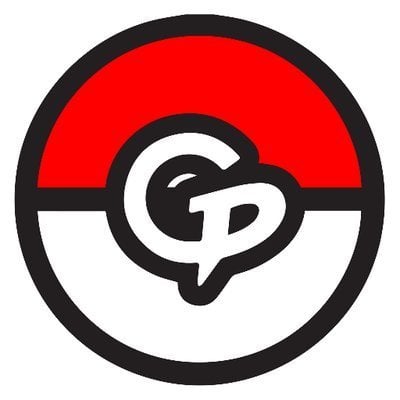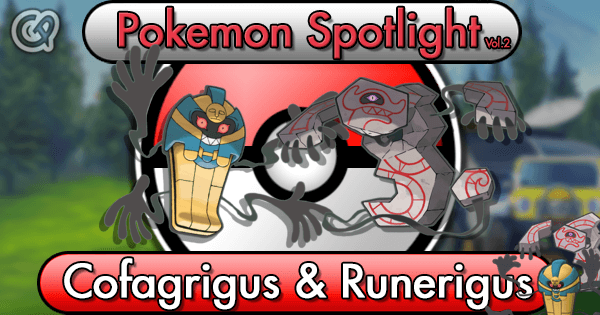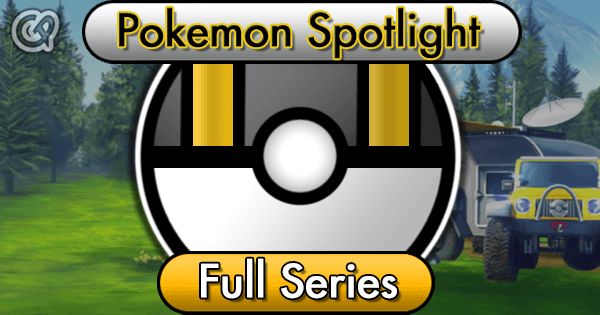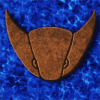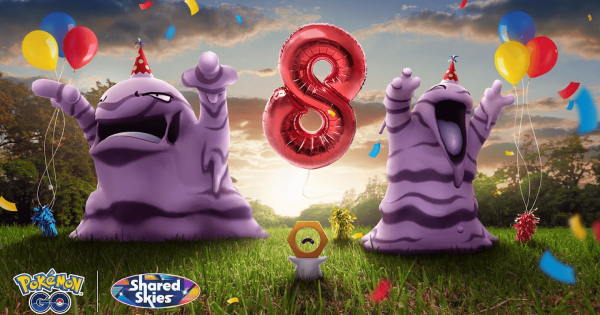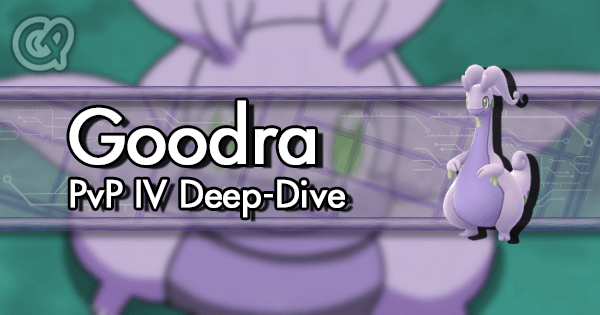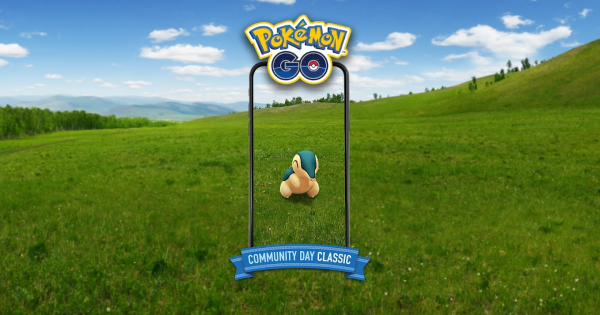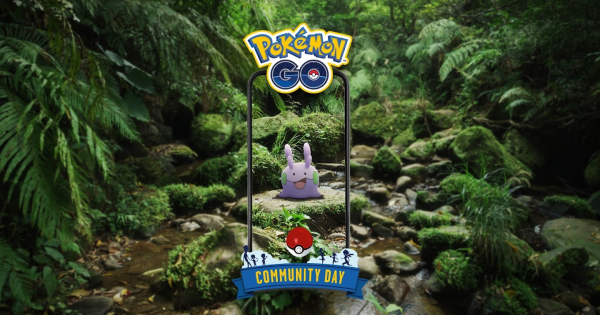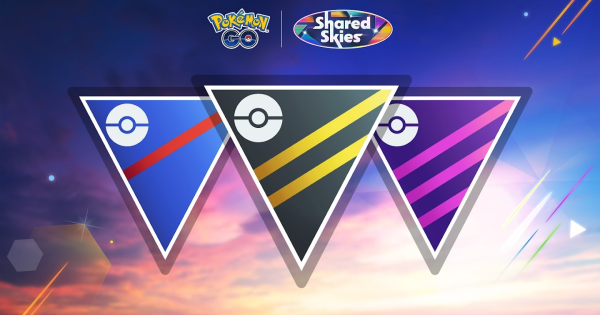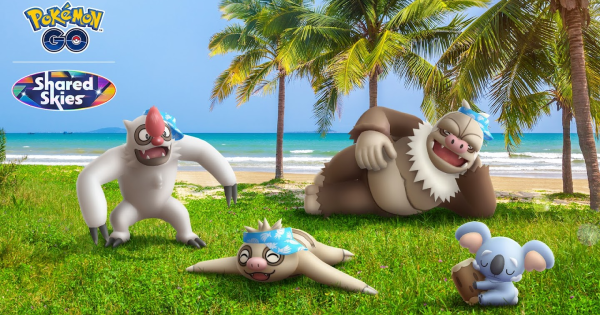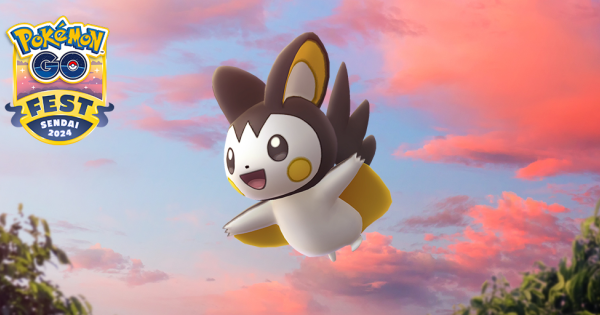October has long been a month largely dedicated to Ghost and Dark Types in Pokemon Go. They match the theme of Halloween perfectly, and so they’re frequently tied to these events every single year. But what happens when a Pokemon drops for an event like this, but it’s held back by a bad moveset? It can be heartbreaking to see, especially when it’s a Pokemon that you’ve been looking forward to for a long time. But does the proverbial book on these Pokemon close as soon as they’re released? Do we bury these specters, and look on to what might have been as Ghosts of viability long-lost?
If you ask Cofagrigus and Runerigus, then the answer is a resounding No!
Cofagrigus and Runerigus are cut from the same cloth in a lot of ways. They’re very closely related, and technically evolve from the same Pokemon, Yamask, though Runerigus comes from the Galarian variant. They also have eerily similar stories to tell! As shadows of the past, these ghosts can give us hope for the future, so let’s dive in and take a look at their stories!
Cofagrigus
Yamask was released way back in October 2019 as a part of that year’s Halloween celebration. It dropped with its Shiny forme available, which made it a really fun Pokemon to collect during the event, and one that many players had been looking forward to for a long time! While not on a par with famous Pokemon ilke the eponymous Charizard, Cofagrigus has been a fairly popular Pokemon since its release way back in Pokemon Black/White 8 years earlier in 2011 (2010 for Japan, as this was before Gamefreak started staging simultaneous global releases). Its unique design alone captivated many players, and excitement for the release of the Coffin Pokemon was fairly high. PvP had been out for a few years by that point, so the community was very well aware of the fact that Cofagrigus had a stat-line that had the potential to be outstanding, and it had great moves too! This was going to be a perfect event with a strong emphasis on catching every Yamask on the map!
…and then it was given Astonish and Zen Headbutt.
Cofagrigus’ future viability in PvP relied heavily on it learning two moves in particular; Shadow Claw and Shadow Ball, with the former being the most important piece of this puzzle due to its stellar PvP performance. That would have been best-case, and Cofagrigus did manage to score Shadow Ball, but its Fast Move situation turned out to be the worst possible case scenario, as these are the moves that Niantic uses to curse a Pokemon with too much potential. With one move, it was safe to bury this coffin, as it was very dead.
And then Go Battle League Season 9 happened.
The Season 9 moveset update back in August 2021 was a bit underwhelming for the most part. Weather Ball was nerfed so that it was no longer quite as dominant a move, Feather Dance became more expensive to use to slap Pidgeot in the face, and Manectric was given access to Thunder Fang for a bit more power. Overall, it wasn’t the most impactful or exciting update that we’ve seen. But something else was lurking in this update. Something sinister and ghoulish. Something… haunting. That’s right; Cofagrigus’ shadowy hands had reached out across time, and when they recoiled they were slashing everything that stood before them! That’s right; Cofagrigus finally had Shadow Claw!
With Shadow Claw, this absolute tank of a Ghost finally had its chance to rise from its grave, and strike fear into the hearts of all who tred in the Great League as it ascended to the absolute throne and took on the coveted title of…. really good! As it turns out, Niantic’s apparent fears of Cofagrigus were largely unfounded, as it didn’t turn into the absolute master of the Great League, but rather became a sought-after and valuable Pokemon that could do a lot. Cofagrigus was the big winner of Go Battle League Season 9, and at long last it could be exhumed and put on display, taking its rightful place in the Great League after all too long. Congratulations, Cofagrigus, you’ve earned this!
Runerigus
Stop me if this story sounds familiar.
Galarian Yamask was released way back in October 2020 as a part of that year’s Halloween celebration. However, unlike its more classical Sarcophagus relative, Runerigus was a fairly new Pokemon. In fact, it had only been released back in November 2019, making it a part of the surprisingly rushed batch of Galar Pokemon that followed on the heels of the games themselves. Still, that’s not to say that Runerigus wasn’t anticipated; quite the opposite, in fact! Despite being a different Pokemon than Cofagrigus, Runerigus shared the same great base stat-line, and added Ground to its Ghost typing for added flavor. While it wasn’t anticipated to be the best option among the two, it definitely had a lot of potential, especially in limited-type cups that would allow for Ground but not Ghost. Needless to say, this was a Pokemon with some potential.
…and then it was given Astonish.
Yeah, just Astonish. Cofagrigus at least had two bad Fast Moves on launch, poor Runerigus just got the one. Needless to say, Runerigus needed a good Fast Move to excel, but it fell short of the finish line. Much like Cofagrigus before it, Runerigus was quickly buried away and became a footnote in Pokemon Go history; a glyph to mark the capricious and sometimes cruel whim of Niantic’s moveset hand-outs. Never again would Runerigus see hope for a brighter future.
And then Go Battle League Season 12 happened.
Like Cofagrigus before it, Runerigus was blessed with what is arguably its best possible Fast Move and the catalyst for its new potential: Shadow Claw. With this new crown-jewel of a move, Runerigus hyroglyphic visage took on a new meaning, as it ascended to the realm of… pretty good. Yeah, Runerigus is definitely a good Pokemon, but it’s not quite as much of a staple of Cofagrigus. Despite their similarities, this ghost has a bit less viability than Cofagrigus, in part due to its Ground typing doing it few major favors. It’s powerful and effective, but also a little easier to counter due to its additional weaknesses. Still, Runerigus should not be underestimated, as it still has a strong potential presence in PvP and can definitely deliver if played to its strengths!
How do you Evolve Yamask/Galarian Yamask?
While basic Yamask is pretty straight-forward at a typical 50 candy cost, Galarian Yamask is a different matter altogether. While its in-game variant has one of the most convoluted evolution methods ever conceived, Galarian Yamask is a tiny bit easier. In order to evolve Galarian Yamask, just do the following:
- Have 50 Yamask candy ready
- Buddy your Galarian Yamask
- While your Galarian Yamask is Buddied, win 10 raids
- Evolve your Galarian Yamask!
Closing
Two ghosts, one story. Just like their origin with the humble Yamask in its two forms, these Pokemon parallel one another incredibly closely on many fronts. Feared pre-release for their potential, both have shown themselves to be worthwhile but not overpowered, and both are now finally worth raising in their own right. A fitting end for such great Pokemon
So what Pokemon should we cover next for this series? We’ve had a request for Dratini and its family and will probably start on that soon, but if there are any others that you’d like to see in article format, then comment below and let us know! Thanks again, and until next time!

